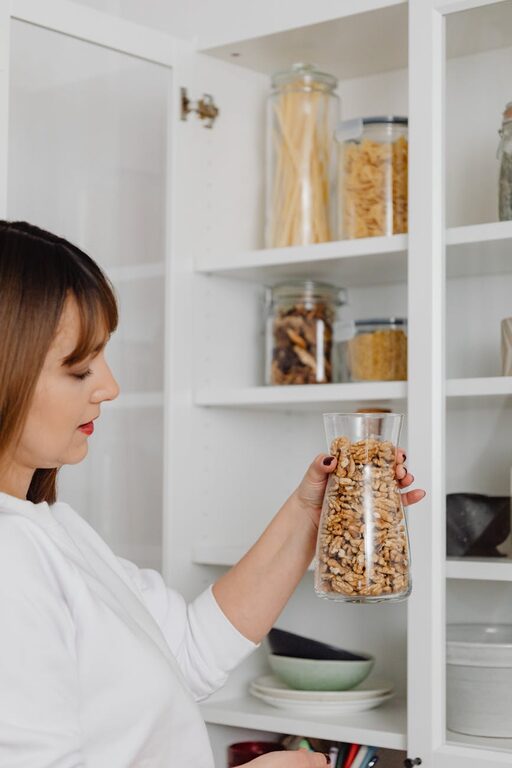
Keeping your fridge and pantry tidy can make a huge difference in your daily routine. Not only does an organized space look inviting, but it also helps you save money by reducing food waste and makes cooking easier. Whether you have a large walk-in pantry or a small kitchen fridge, these simple steps will help you maintain an orderly and efficient food storage system.
Why Keep Your Fridge and Pantry Organized?
Before diving into practical tips, it’s helpful to understand why organization matters:
– Reduce Food Waste: Knowing what you have helps prevent buying duplicates and ensures older items get used before they expire.
– Save Time: Finding ingredients quickly speeds up meal prep.
– Promote Food Safety: Proper storage keeps food fresh and safe to eat.
– Create a Pleasant Kitchen Environment: A neat area enhances your cooking experience.
Organizing Your Fridge
A well-organized fridge helps maintain freshness and avoids clutter. Here’s how to do it step-by-step.
1. Clear Out Expired and Unwanted Items
Start by removing everything from your fridge and inspecting expiration dates. Discard anything spoiled or past its use-by date. This clears up space and prevents clutter.
2. Clean the Fridge Thoroughly
Once emptied, use a mild cleaning solution—like a mix of water and baking soda or a gentle dish soap—to wipe down shelves, drawers, and door compartments. Dry everything before placing food back.
3. Use Storage Bins and Clear Containers
Using clear, labeled bins or containers helps group similar items, like dairy products, snacks, or condiments. This keeps things tidy and easy to find.
4. Know the Ideal Storage Zones
Different fridge zones have varying temperatures:
– Top Shelves: Best for drinks, ready-to-eat foods, and leftovers.
– Middle Shelves: Store dairy, eggs, and packaged foods.
– Bottom Shelves: The coldest part; great for raw meat, fish, or poultry (keep these in sealed containers to prevent leaks).
– Drawers: Use the vegetable drawer for produce, and a separate drawer for fruits or deli items.
– Door Racks: Store condiments, juice, and small bottles (avoid eggs or milk here, as temperature fluctuates).
5. Practice First In, First Out (FIFO)
When putting items back, organize so older products are in front and newer ones in back. This encourages you to use foods before they expire.
Organizing Your Pantry
A tidy pantry keeps meal planning stress-free and supports a clutter-free kitchen.
1. Declutter Your Pantry
Remove all items and sort them by category—canned goods, grains, snacks, baking supplies, etc. Check expiration dates and toss anything expired or stale.
2. Clean the Shelves
Wipe down shelves and walls with a damp cloth and mild cleaner. Let them dry fully before restocking.
3. Choose Clear, Airtight Containers
Invest in stackable, see-through containers for dry goods like pasta, rice, flour, and cereals. Airtight containers protect against pests and keep food fresh longer.
4. Label Everything
Label containers clearly with contents and expiration or purchase dates. This speeds up meal prep and prevents confusion.
5. Arrange Items by Frequency of Use
Place daily essentials like bread, snacks, and spices at eye level or front of the shelves. Store less used items on higher or lower shelves.
6. Use Shelf Organizers and Baskets
Tiered shelves or baskets can utilize vertical space efficiently. Baskets are ideal for grouping snack packs or small items.
7. Keep a Shopping List in Your Pantry
Attach a clip or whiteboard inside the pantry door for a running shopping list. This helps track supplies and avoid overbuying.
Maintenance Tips for Long-Term Success
Keeping your fridge and pantry tidy requires regular attention. Try these habits:
– Weekly Check: Spend a few minutes before grocery shopping to review supplies and remove expired items.
– Clean Spills Immediately: Wipe any spills or sticky spots as soon as they happen to avoid buildup.
– Use a Meal Plan: Planning meals lets you buy exactly what you need, reducing clutter.
– Store Leftovers Immediately: Use designated containers and label leftovers with dates.
– Rotate Stock: Always place new groceries behind older ones to use up items in order.
Bonus Tips
– Use a Lazy Susan: A spinning tray works great for condiments or small jars, making everything accessible.
– Freeze Extra Food: If your fridge or pantry begins to overflow, freezing excess portions helps prolong shelf life.
– Use Door Space Wisely: Store small, frequently used items on the door shelves for easy access.
Conclusion
Keeping a tidy fridge and pantry is easier than it seems and pays off with less stress and more efficient cooking. By decluttering, cleaning regularly, and using smart storage solutions, you can transform your kitchen into a well-organized space. Start with small steps, maintain good habits, and enjoy the benefits of an orderly food storage system every day. Happy organizing!
